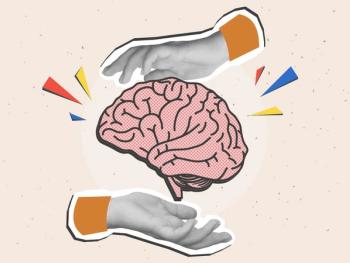
Don’t Give Up on the Difficult Patient
We all become much better therapists if we have confidence in our healing gifts and focus on enhancing our relationships with patients.
COMMENTARY
Forty years ago, I had my most angry professional moment. It happened at a weekly meeting that included all our faculty, staff, and trainees-about 200 people. A young and arrogant, not very bright, third-year psychiatry resident rose to complain bitterly about the “crappy patients” he and his fellow other residents were being assigned for psychotherapy.
Feeling surprisingly furious at his insulting tone, I replied, “Never once in my life have I ever met a ‘crappy’ patient, but certainly I have come across some crappy doctors who didn’t appreciate them.”
Most therapists prefer “easy” patients who don’t make waves. Whenever things aren’t going well in treatment, it is far too easy for the therapist to blame the patient, not himself, for a bad match-up.
Not Fanny Marell, a social worker and licensed psychotherapist from Sweden, who likes to help people who most need help. She writes:
Many professionals shy away from patients who have powerful personalities and strong self-destructive drives.
I think they are missing out on the best professional experiences any therapist can have. The most difficult patients often eventually form the deepest relationships and have the most satisfying outcomes.
Of course, treating people who are basically healthy is much easier. In fact, it is too easy-they would do well on their own, even without therapy. We are most important and make the biggest difference in the lives of the people who need us most, even if the day to day is not always smooth.
The trick is to channel the patient’s power into productive, not destructive, activities. With redirection, what was once the power to destroy can now become the power to heal and create.
Power that seemed a curse can become a gift. People who were once successful only at hurting themselves can become successful in sorting out their lives.
It doesn’t work to try to dominate and control a powerful person-this just leads to fights and makes the patient feel like a caged animal.
The model that works best comes from Judo. Redirect the patient’s destructive power into constructive power. Join with the patient and slowly find ways in which he can use his power to realize dreams, instead of to create nightmares.
This requires time, patience, and not being afraid of their forcefulness. It requires trust and hope. Usually you cannot decide for them and say we should go this way or you should be doing this.
A good alliance requires you not be too close or too far. Too close and you risk scaring or overwhelming. Too far and the relationship will be cold and ineffective.
You need to get into an interpersonal rhythm with the patient-kind of like when you’re dancing and you tune into the music, your dance partner, where he is heading, what steps he chooses.
When the dance is working, you can start adding your own small steps that create a difference. Many small differences create a new pattern.
When a patient is strong, don’t challenge strength for strength. That dance is too well known and leads to escalation and struggle. Allow the patient to lead-let her retain autonomy and control over the situation, while you join, explore, and try to understand.
You need to put yourself next to the patient and sometimes throw yourself out into empty air together to see where you land. You need to develop a genuine here and now relationship and be working together to find the way forward.
Enter the patient’s world just like an anthropologist. Be curious. Ask gentle questions that broaden perspective. Keep wondering. Why? How do you understand this? How do you put together your world?
Most things that may seem strange can be understood once you understand the patient’s world view. My experience is that this also applies to understanding people who have become psychotic.
When people express themselves, thoughts get formulated into words and become knowledge.
Be patient. Stay close, but don’t invade. Always ask for permission.
Dare to let the patient know who you are, with your small oddities. Show your humanity. One can be a bit weird and still be normal.
Show trust. Invite trust.
You can’t do good work if you are scared of the patient. You will become stiff and will have to struggle to keep up with him; it must be a natural dance. Recognize your fear and manage it outside the sessions. Often patients can sniff out that I’m afraid, and then I signal the wrong things-I’m afraid of you; you are dangerous. It will be difficult to create positive spirals if I am negative.
When you get the patient’s trust and confidence, treat it as the most beautiful gift you have ever been given and receive it with the utmost seriousness. Many patients I have met who seemed incurable turned out to be very curable once we had formed a good relationship.
Thanks so much, Fanny, for sharing your wisdom and your warmth. We can all become much better therapists if we have confidence in our healing gifts and focus on enhancing our relationships with patients. Too many therapists become distracted by specific techniques and lose the patient while following the manual.
Therapy should always be an exciting adventure for both participants. I have undoubtedly learned a great deal more from my patients than they ever learned from me. And some of the deepest relationships and best moments in my life emerged with people I treated because no one else would.
Disclosures:
Note to readers: As with all of our blogs, the opinions expressed in this commentary are solely those of the author. Comments not followed by full names and academic titles will either be removed or heavily monitored. –Psychiatric Times
Newsletter
Receive trusted psychiatric news, expert analysis, and clinical insights — subscribe today to support your practice and your patients.

















